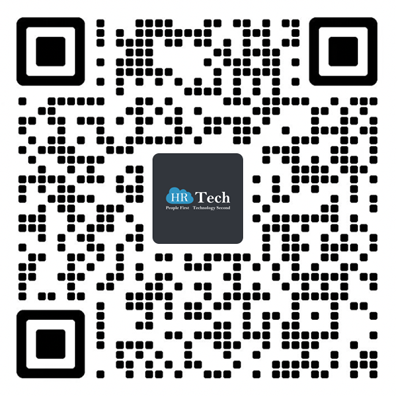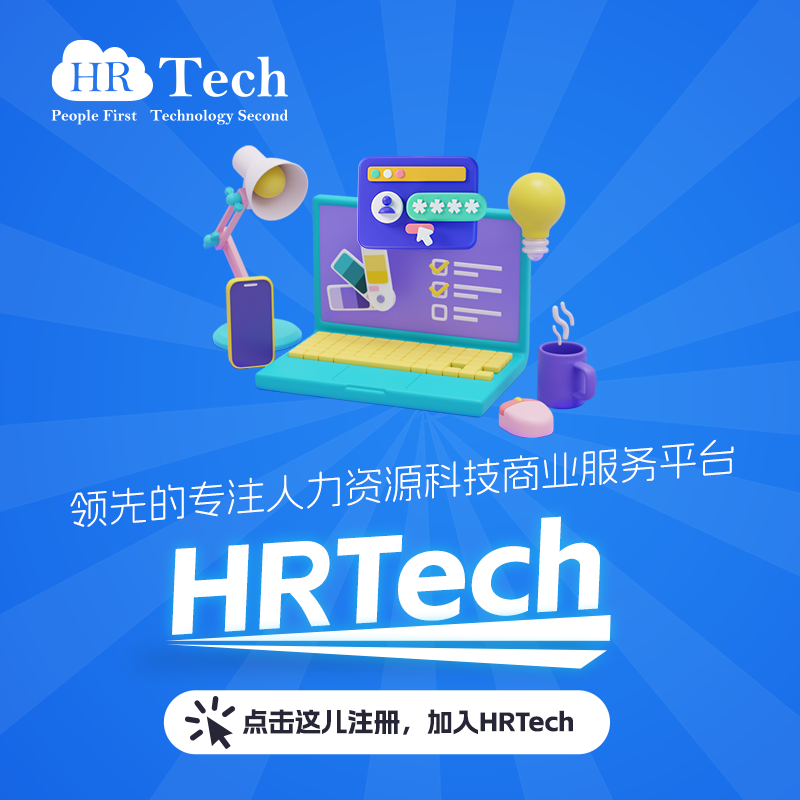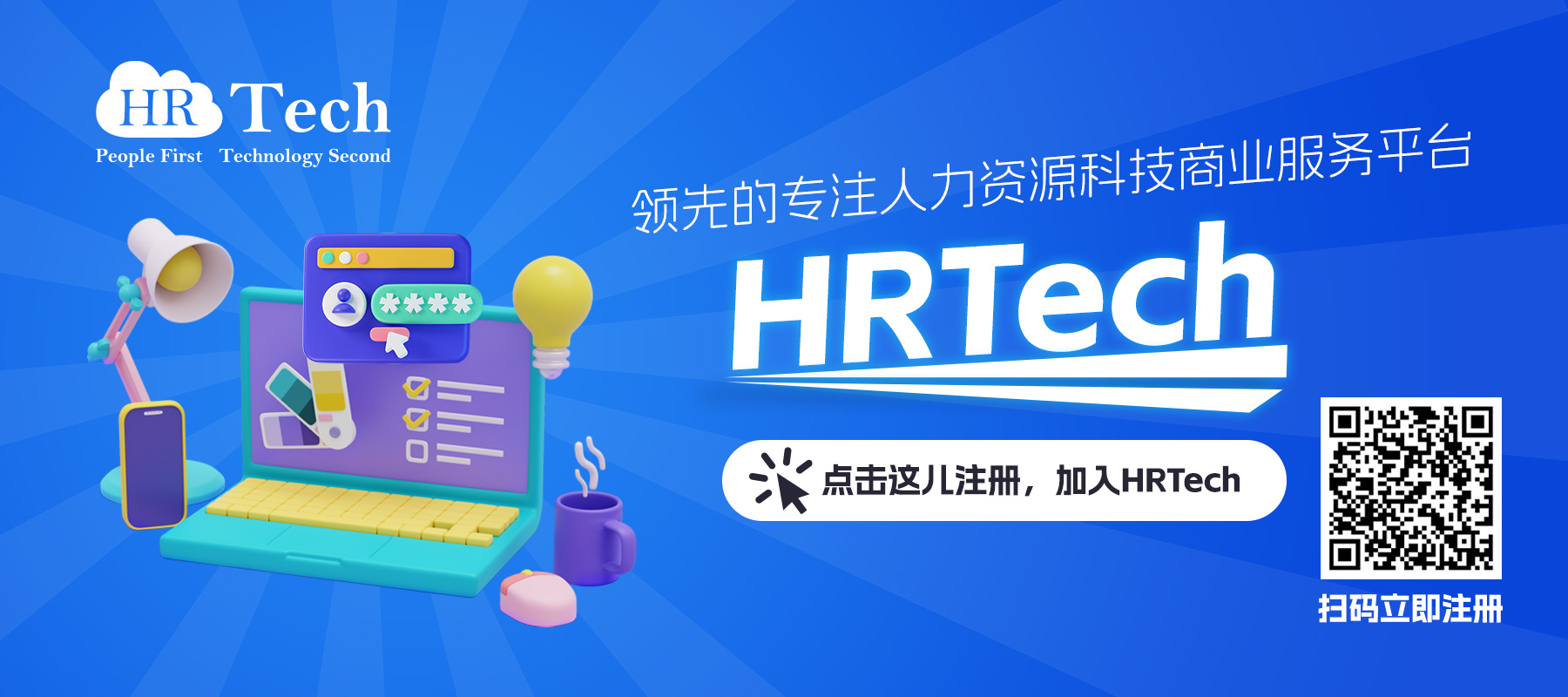-
 workday
workday
Workday宣布2020财年第二季度财务业绩,收入为8.878亿美元,同比增长32.2%,同时提高2020年度收入预测
编辑注:我们整理财报的核心数据信息:
核心的几个数据:
第二季度总收入为8.878亿美元,去年同期为6.717亿美元,同比增长32.2%。订阅收入为7.572亿美元,同比增长33.9%
Workday表示,现在认为2020财年的订阅收入在30.6亿美元至30.7亿美元之间,高于先前预期的30.5亿美元至30.6亿美元。
该公司还预测第三季度订阅收入在7.83亿美元至7.85亿美元之间。分析师平均预期为7.826亿美元。
截至7月31日的季度,净亏损为1.21亿美元,去年同期为8616万美元。稀释后摊薄每股净亏损0.53美元,去年同期为0.4美元。
非GAAP计算下摊薄每股净收益0.44美元,超出分析师预测的0.35美元,去年同期为0.31美元。
在过去的四个季度中,该公司已经四次超过市场预期的每股盈利预测。
财报发布后,小幅上涨到187.65 涨幅1.26%,市值424亿美元。
加利福尼亚州,PLEASANTON,2019年8月29日 财务和人力资源企业云应用领域的领导者Workday,公司(WDAY)今天公布了截至2019年7月31日的2020财年第二季度业绩。
2020财年第二季度业绩
总收入为8.878亿美元,比2019财年第二季度增长32.2%。订阅收入为7.572亿美元,比去年同期增长33.9%。
运营亏损为1.225亿美元,占收入的负13.8%,而去年同期的营业亏损为8900万美元,占收入的负13.2%。非GAAP营业收入为1.175亿美元,占收入的13.2%,而非GAAP营业收入为6810万美元,占去年同期的10.1%。
基本和摊薄后每股净亏损为0.53美元,而2019财年第二季度每基本和稀释后每股净亏损为0.40美元。非GAAP每股摊薄净收益为0.44美元,而非GAAP每笔摊薄净收入为0.44美元。去年同期的份额为0.31美元。
经营现金流为1亿零300万美元,而去年同期则为5,760万美元。
截至2019年7月31日,现金,现金等价物和有价证券为19.3亿美元。未实现收入为18.9亿美元,比去年同期增长27.1%。
对新闻的评论
“这是一个强劲的季度,全球客户在财富500强和全球2,000强企业中的势头持续增长,因为越来越多的企业希望Workday能够在一个由机器学习驱动的系统中进行规划,执行和分析。此外,我们与Adaptive Insights收购完成了一年,并继续在我们的整合愿景方面取得了很大进展,“Workday的联合创始人兼首席执行官Aneel Bhusri说。“随着我们进入下半年,我们将继续投资于利用我们优势并开辟新机遇的领域。”
Workday联合总裁兼首席财务官Robynne Sisco表示,“我们的第二季度业绩强劲,订阅收入增长了34%,营业利润率和现金流也很稳健。” “根据我们的第二季度业绩,我们正在提高2020财年的订阅收入前景,现在预计订阅收入为30.6亿美元至30.7亿美元。我们预计第三季度的订阅收入将在7.83亿美元至7.85亿美元之间。我们继续优先投资于长期增长计划,同时随着时间的推移提供稳定的营业利润和现金流。“
最近的亮点
Workday 在加利福尼亚州普莱森顿开设了新的总部。新建的410,000平方英尺的六层建筑旨在鼓励合作,并将容纳2,200名员工以及Workday的新客户中心。
Workday 庆祝其收购Adaptive Insights一周年。在过去的一年中,这两个组织已经看到了持续的业务规划动力,包括增加了800多名新的Adaptive Insights客户,机器学习进步,完成了第一阶段的Adaptive Insights与Workday的集成,作为Power的一部分。一,并记录参加公司年度客户会议的Adaptive Live。
Workday 发布了对道德人工智能(AI)的承诺,其中包括六个原则,指导它如何负责任地为企业开发机器学习 - 一部分AI。
Fast Company在其50个最佳创新工作场所的首批名单中认可了Workday ,该奖项旨在表彰那些表现出对各级鼓励创新的坚定承诺的组织。
Workday成为SCOPE Europe 首个遵守欧盟云行为准则(CoC)的组织,强调了公司对全球数据保护的持续承诺。
工作日任命Carolyn Horne为欧洲,中东和非洲地区总裁,David Webster为APJ地区总裁。此外,Workday还将Josh DeFigueiredo提升为首席安全官。
Workday发布了2019年全球影响报告,该报告深入探讨了公司对世界产生积极影响的努力 - 从实施可持续实践到创造更好的工作场所,以及增强积极的社会影响力。
盈利电话详情
Workday计划今天召开电话会议,审查其2020财年第二季度财务业绩,并讨论其财务前景。电话会议定于美国东部时间下午1:30 /美国东部时间下午4:30开始,可通过网络直播进行。网络直播将在现场直播,重播将在完成直播约90天后提供。
Workday使用Workday博客作为披露重要非公开信息的手段,并遵守法规FD下的披露义务。
1非美国通用会计准则营业收入不包括基于股份的薪酬支出,雇员工资税相关项目的员工股票交易以及与收购相关的无形资产的摊销费用。有关详细信息,请参阅随附财务表中标题为“关于非GAAP财务指标”的部分。
2非GAAP每股净收益不包括以股份为基础的薪酬支出,雇主工资税相关项目的员工股票交易,与收购相关的无形资产的摊销费用,与我们的可转换优先票据相关的非现金利息支出以及所得税效果。有关详细信息,请参阅随附财务表中标题为“关于非GAAP财务指标”的部分。
关于Workday
Workday 是面向财务 和 人力资源的企业云应用程序的领先提供商 。Workday成立于2005年,为世界上最大的为教育机构和政府机构提供财务管理,人力资本管理,规划和分析应用程序的公司。从中型企业到财富500强企业的组织选择了Workday。
使用非GAAP财务指标
根据GAAP确定的非GAAP财务指标与Workday财务结果的调节在随后的财务数据之后包含在本新闻稿的最后。有关这些非GAAP财务指标的描述,包括管理层使用每项指标的原因,请参阅标题为“关于非GAAP财务指标”的表格部分。我们对非GAAP运营利润率的前瞻性展望与我们的对比基于股票的补偿费用的量化(不包括在我们的非GAAP运营利润率中)需要额外的输入,例如授予的股票数量和无法确定的市场价格,因此无法在不合理的情况下获得具有前瞻性的GAAP运营利润率。 。
前瞻性陈述
本新闻稿包含前瞻性陈述,其中包括有关Workday整合被收购公司的能力的陈述; 战略投资; 财年和第三季度订阅收入前景; 能够优先投资于长期增长计划,同时提供稳定的营业利润和现金流。单词“相信”,“可能”,“会”,“估计”,“继续”,“预期”,“打算”,“期待”,“寻求”,“计划”,“项目”,“展望未来, “”期待“,”“进入”,类似的表达旨在识别前瞻性陈述。这些前瞻性陈述受风险,不确定性和假设的影响。如果风险实现或假设证明不正确,实际结果可能与这些前瞻性陈述所暗示的结果产生重大差异。风险包括但不限于:(i)与我们成功整合Adaptive Insights运营或未能实现本收购或任何其他收购或交易的预期收益相关的风险; (ii)我们有能力实施我们对Adaptive Insights业务或任何其他被收购公司的计划,目标和其他期望; (iii)我们的安全措施中的违规行为,未经授权访问我们客户的数据或数据中心运营中断; (iv)我们有效管理增长的能力; (v)竞争因素,包括定价压力,行业整合,新竞争对手和新应用的进入,技术进步以及竞争对手的营销举措; (vi)开发企业云应用和服务市场; (vii)客户接受我们的应用程序和服务,包括机器学习和人工智能等基础技术; (viii)一般经济或市场条件的不利变化; (ix)与我们的国际业务相关的监管,经济和政治风险; (x)延迟或减少信息技术支出; (xi)销售变动,由于我们的订阅模式,可能不会立即反映在我们的结果中。有关可能影响工作日结果的风险的更多信息包含在我们向美国证券交易委员会(SEC)提交的文件中,包括我们在2019年4月30日结束的季度的10-Q表格以及我们可能向SEC提交的未来报告。不时,这可能会导致实际结果与预期不同。
本文档,我们的网站或其他当前不可用的新闻稿或公开声明中引用的任何未发布的服务,功能或功能可能会在工作日自行决定更改,并且可能无法按计划交付或根本不交付。购买Workday服务的客户应根据当前可用的服务,功能和功能做出购买决策。
©2019. Workday,Inc。保留所有权利。Workday和Workday徽标是Workday,Inc。的注册商标。所有其他品牌和产品名称是其各自所有者的商标或注册商标。
-
 workday
workday
Workday一个月内跌掉近100亿美元市值,发生了什么?
Workday 在过去的一个月市值跌去了将近100亿,如果按照一个月前的最高点226美元/股来对照,市值510亿美元,截止今天是420亿美元。按照昨天最低点的股价410亿美元。跌去了近100亿美元的市值。
发生了什么?很多人不禁要问?
我们来看下这行业前两位的对比情况:
ADP今年涨幅27.16% 股价165美元,市值达到716.3亿美元,最高点市值746亿美元。
Workday 今年年初至今涨幅是16.48%,股价185.99美元,市值420亿美元,最高点市值520亿美元
我们来看下workday目前的数据情况:
对于workday 的收入构成可以看如下:
订阅服务占据大头23.86亿美元,占比84.54%
其中美国收入占到77.01%,依旧是绝对大头。
最后我们来看下历年来的收入表格以及增幅。
2015年7.88亿美元,2016年11.57亿美元,2017年15.74亿美元,2018年21.43亿美元,2019年28.22亿美元。整体增幅都在30%以上。
关于workday的介绍大家已经了解了非常多,在这个月美东时间29号会发布2020年度的第二季度财报。从预测中看,大家已经感觉到增长的压力。
美国经济放缓的影响,极大的影响了workday的营收增长速度。
管理层谈到第一季度财报显示收入8.251以美元,同比增加了33.4%,其中订阅收入达到7.01亿美元增长34.3%。同时预计第二季度收入8.7亿美元至8.72亿美元,其中订阅收入增长约32%,达到7.46亿美元至7.48亿美元。年度总收入调整到35.45亿美元到35.6亿美元。
而市场预测第二季度应该继续保持一个高的增长,如果不能够达到8.91亿美元,则意味着作为成长型企业的增长严重放缓,一旦放缓,相关匹配的高溢价将被挤出。这也是目前股价狂跌的重要影响因素。
而且这个增长放缓的速度可能比想的还要大。
以下来自分析师的分析与大家分享:
Workday成功很大程度上得益于其在核心竞争力上构筑了较高的壁垒。
具体的而言
(1)公司主要专注于大中型客户,客户毛留存率超过95%,2017年平均客单价为85万美元,高客单价和高留存率为公司带来了更多的资金;
(2)基于HCM+财务管理延伸产品线,为客户提供全方位一站式服务:以HCM和财务管理为核心产品,不断延伸产品线,不断满足客户一站式采购需求,真正实现“以客户为中心”。
(3)善用资本市场,高研发投入+战略收购加快产品更新速度。公司2012年登陆资本市场前已是风投市场明星企业,强大的融资能力为研发投入和并购提供了坚实的基础。长期以来,公司产品研发费率和费用远超同行,2018年研发费用为12.12亿美元,研发费率在30%上,高额的研发投入及12次战略收购,缩短了产品的更新和完善周期。
除此外公司拥有(1)云基因优势:Workday创始之初便定位于SaaS领域,其战略具备连贯性,不存在调整磨合和消耗,云先发优势助公司进入线)创始人优势:创始人深耕HR领域多年,行业经验丰富,优秀的市场经验和定位能力帮助Workday在初始阶段摆脱巨头夹击,找准市场需求,并实现后续市场布局的顺利进行。
未来客户+产品两维度强化核心竞争力,发展策略值得借鉴从发展策略来看,未来客户及产品仍然是企业关注的重点,
客户方面(1)继续推进战略收购计划,全方位强化实力,(2)继续保持高研发投入,提升产品竞争力;
市场方面(1)拓展海外市场,扩大市场规模 ;(2)维持大中型市场优势,积极开拓中小型企业市场。
-
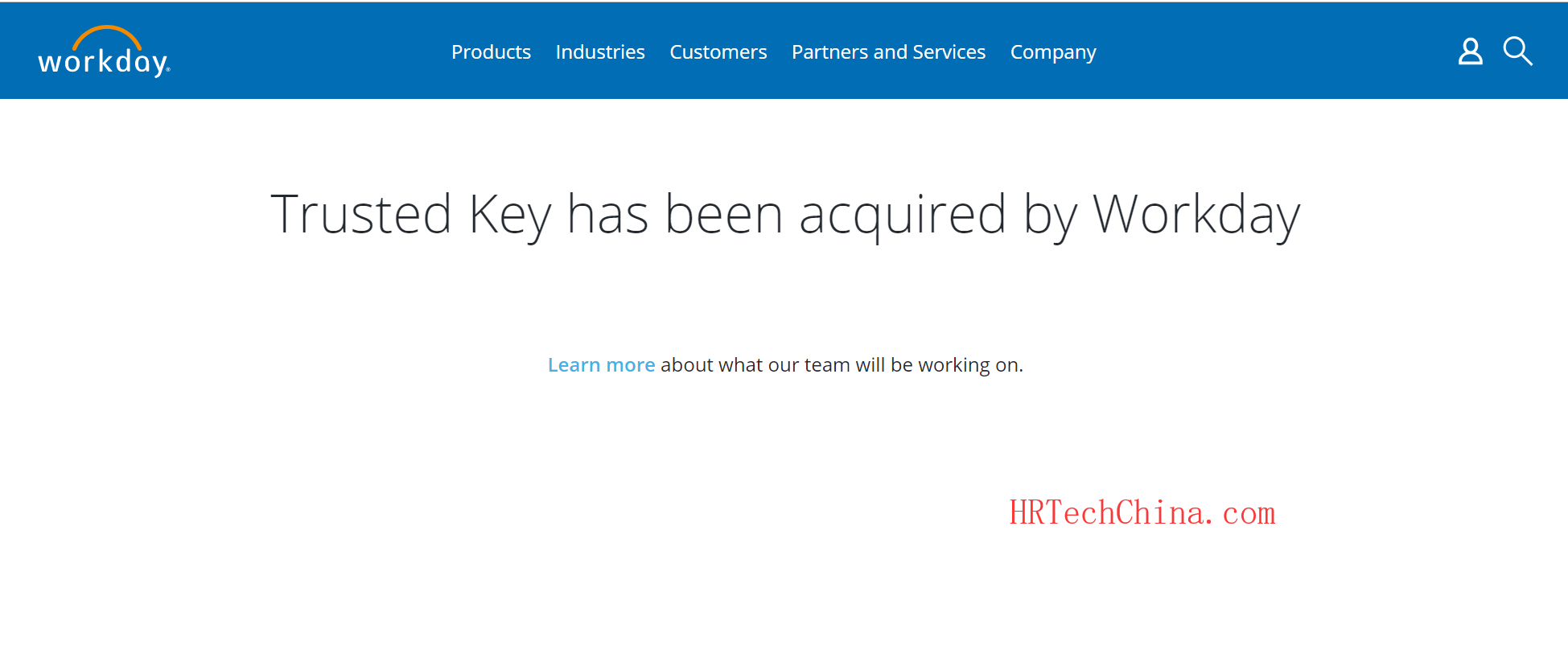 workday
workday
Workday收购Blockchain ID管理公司Trusted Key-来自西雅图的区块链创业公司
上周我们发布了workday进入区块链凭证管理的新闻,我们也在想他们如何实现以及具体的动作的时候,我们就听到了收购这家来自西雅图的区块链创业公司的消息。
消息称:总部位于华盛顿州西雅图市的Trusted Key公司将在最近宣布的收购中将其基于区块链的数字身份管理技术引入Workday。Trusted Key于2016年由前微软和甲骨文高管推出。
“通过我们的新平台,Workday希望将凭据带入数字时代,”Workday SVP Jon Ruggiero说。他强调了区块链技术可以帮助创建“一种新形式的数字凭证 - 一种让个人掌握其数据,便携,真实,安全”的方式。
Trusted Key的数字身份管理技术使金融机构能够利用凭证化和令牌化为用户提供更加无缝和安全的身份验证体验。该平台使用强大的加密技术和区块链技术将政府颁发的身份证件转换为安全的加密凭证和令牌。这些令牌可用于安全地建立身份以访问在线资产和移动应用程序,而无需依赖密码。凭证还可用于授权交易和制作数字签名。
如果你想进一步的交流区块链技术,可以添加下面二维码地址加入HRTech区块链交流群。
云核心财务管理套件提供商Workday将使用区块链驱动的凭证技术来帮助公司改进其人力资源运营,从而更有效地验证申请人的技能和资格,以及新员工。正如Ruggiero指出的那样,数字凭证不仅可以减轻耗时,容易出错的手动流程。它还使公司能够更容易地应对“更具移动性,分布式和多样化”的不断变化的员工队伍,并帮助紧张的劳动力市场中的公司更快地以更少的摩擦吸引和吸引他们的首选候选人。
Workday成立于2005年,总部位于加利福尼亚州普莱森顿,其客户包括美国银行和汤森路透,以及Netflix和Denny's。Workday表示,它已经处理了超过1亿份凭证和7000万份求职申请 - 以及就业记录,证书,许可证等。这家上市公司在纳斯达克上市,市值为480亿美元。Aneel Bhusri是联合创始人兼首席执行官。
Trusted Key于2016年由Prakash Sundaresan和Amit Mital创立,去年春天获得了300万美元的资金。由Founders Co-Op领导的这轮融资使该公司的股权融资总额超过400万美元。Trusted Key是Kernel Labs的第一个出口,Kernel Labs是一家西雅图初创工作室,专注于机器学习,计算机视觉和安全性。
当时,首席执行官Amit Jasuja解释说,用户只有一次受信任的实体证明,然后可以“访问信任校对流程的大型提供商网络,而不会产生身份验证和密码复杂性的不断成本。”该公司基本上创建了一个由用户控制的单一可信数字身份。然后,此ID将用于已同意他们信任验证源的多个组织。因此,用户每次想要共享其凭据时都不必经过验证和身份验证。
区块链如何影响?Trusted Key的单个ID称为数字身份钱包,为一个人持有许多凭据。钱包的基础是公司允许的区块链,保护和验证数据以防止欺诈。
对于员工自我主权身份(SSI)而言,收购是否构成Workday 与Jobrin Creds项目的一部分,与Sovrin和IBM一起,尚不清楚。但是,在可信密钥销售被揭露之前,Ruggiero确实在他的博客文章中分享了一个求职者使用区块链ID的例子。
Workday和Trusted Key以及Job-Creds的合作伙伴是权力下放的身份基金会(DIF)的成员。DIF旨在制定标准并建立公平的数字身份系统。它还包括微软,万事达卡和埃森哲等知名品牌。
以上新闻来源多个,由AI翻译编辑完成。仅供参考。
相关新闻:
重磅:Workday宣布使用区块链技术对证书(个人数据)进行数字化管理,区块链与人力资源最佳场景与重磅实践!
-
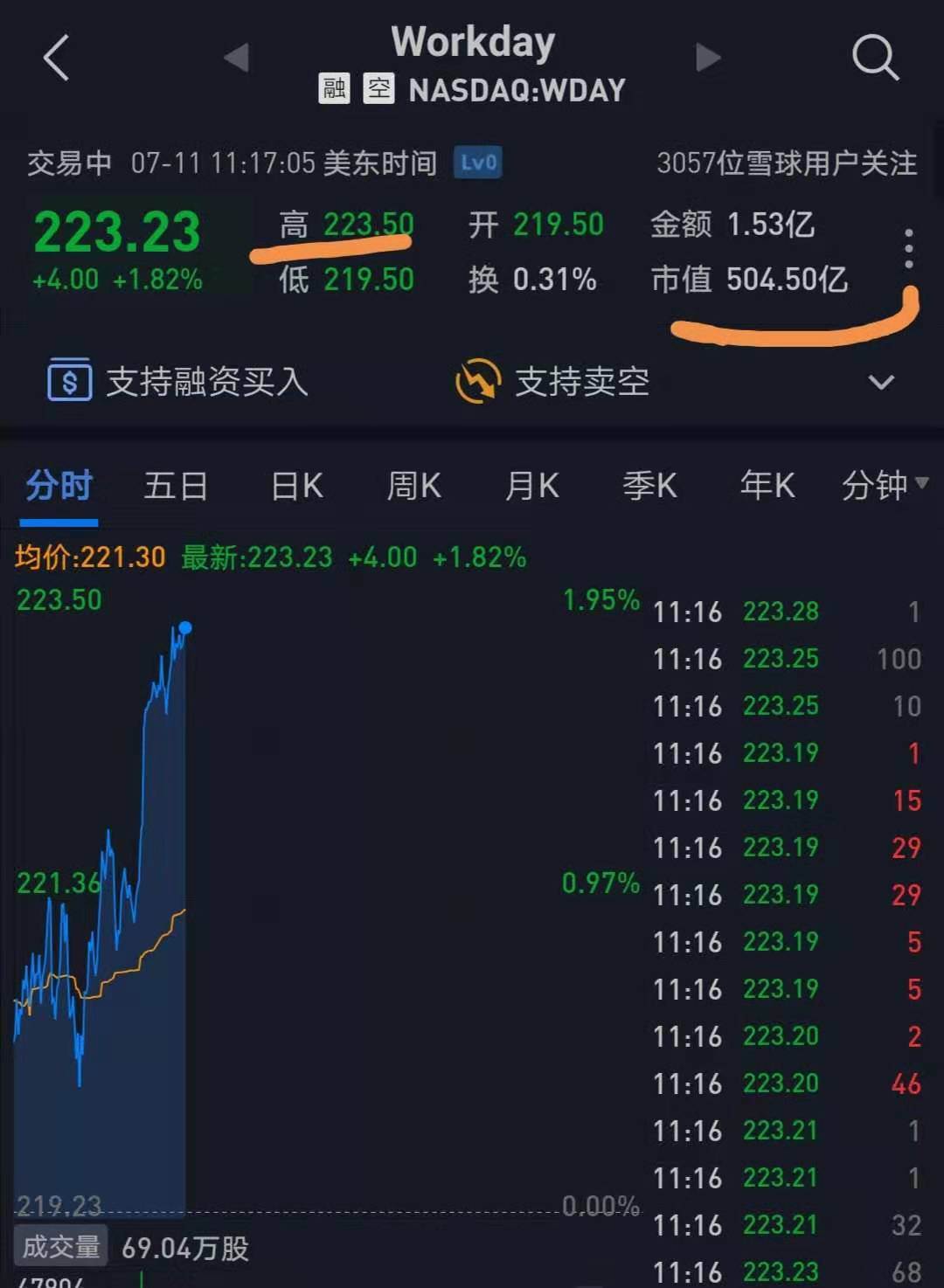 workday
workday
刚刚,workday市值创历史新高,破500亿美元,每股224.3美元,506.92亿美元
受美联储明显暗示降息的影响,美股普遍高涨。人力资源科技类股票均飙涨。
其中workday 创历史新高,破500亿美元市值!
收盘价格更是达到224.3美元的历史新高,市值达到506.92亿美元。
根据数据显示52周最低价格是117.72美元。市净率是24.49。市销率是16.41
下图是盘中的价格截图。
-
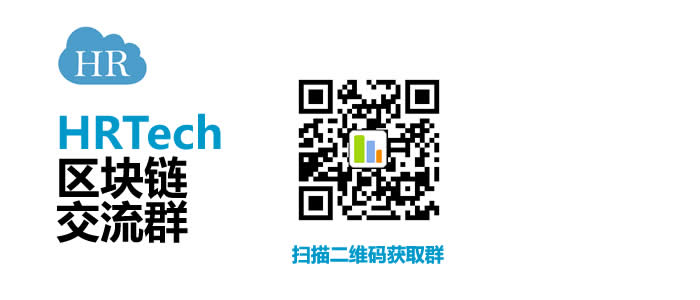 workday
workday
重磅实践:Workday宣布使用区块链技术对证书(个人数据)进行数字化管理,区块链与人力资源最佳场景与重磅实践!
编者注:
7月8日(美西时间)workday的高级副总裁Jon Ruggiero发表了一篇文章,畅谈对于证书的数字化管理,通过区块链技术驱动的新平台。他表示这么做的原因基于几个点“:员工队伍不断发展,用户对隐私的期望越来越高,区块链等新技术也越来越成熟。” 同时详细的介绍了庞大的数据量如3900万的员工社区产生的超过1个亿的证书,7000万的工作申请等等,同时workday的机器学习能够非常好的识别和分类,同时进行验证。
Ruggiero谈到Blockchain的崛起和移动安全性的提升让Workday能够“想象出一种新形式的数字凭证”。通过区块链,数据可以在各方之间移动,同时保持其未被修改的证据。所有这些都发生在凭证变得更加复杂的时候。正如Ruggiero所指出的,今天的证书通常由无数类型的数据组成,从技能到认证再到工作经验。
如果你在做区块链的探索,那么这个场景的应用无疑是和人力资源最佳的结合,因为这些证书一直存在且都是原始的。一旦数字化后如何验证和辨别真伪会产生大量的问题。现在好了,技术发展和大数据量的基础上使用机器学习和区块链技术结合产生新的方式和机会。
详细建议阅读下文,虽然是AI翻译,但是大部分还是通俗易懂的。如果你想进一步的交流区块链技术,可以添加下面二维码地址加入HRTech区块链交流群。
以下由AI翻译完成,仅供参考。原文来自workday的官方网站
Our Vision to Digitize Credentials in the New World of Work
我们在新的工作世界中对证书进行数字化的愿景
今天,我们很高兴能够分享一个项目,帮助我们的客户及其员工更好地驾驭新的工作环境。
当我们开始这个项目时,我们研究了企业的发展趋势,并看到了许多趋势,这些趋势为Workday创造了我们最擅长的机会 - 创新以帮助我们的客户前进。员工队伍不断发展,用户对隐私的期望越来越高,区块链等新技术也越来越成熟。在这些趋势的交叉点,Workday正着手建立世界上最先进的经过验证的凭证网络,由新的基于区块链的数字凭证平台提供支持。
首先,什么是凭据,为什么它们如此重要?凭证可以代表许多不同类型的数据 - 技能,能力,学位,专业认证,完成的学习课程,工作经验等。它们代表了一个人的重要信息:我们需要他们来获得工作,证明我们是谁,我们能做什么,以及获得新的工作机会。
但凭证存在问题。虽然工作领域已经被技术所改变,但凭证并没有太大变化 - 如今,它们仍然主要是离线和基于纸张的,并且验证凭证通常需要大量的手动工作和时间。通过我们的新平台,Workday希望通过将凭证带入数字时代来改变这种状况。
本周,我们在与我们的合作伙伴和服务会议Workday Altitude的与会者开始对这种新的区块链驱动的凭证技术进行alpha测试。这是Workday和我们客户激动人心的新旅程的开始,所以让我们深入了解我之前提到的关键趋势,以及为什么我们认为Workday和我们的凭证平台非常适合帮助解决这些问题。
新的劳动力需求
凭证是一个迫切需要更新的人力资源流程 - 当前的验证流程是手动的,招聘和工作人员可能需要数周时间。我们从客户那里听说他们需要一种更快,更有效的方法来验证技能和行业认证,确保工人得到适当的认证和合规。
与此同时,劳动力本身也发生了变化。随着不同类型的工人 - 承包商,工作人员,薪水和每小时 - 虚拟团队成员在任何全球组织中都很常见,它正在发展为更具移动性,分布式和多样性。一直以来,组织都面临人才短缺,招聘或采购方面的任何摩擦都可能导致入职或失去优秀人才的代价高昂。
通过我们的新平台,Workday希望将凭证带入数字时代。
With our new platform, Workday wants to bring credentials into the digital age.
那么Workday如何帮助我们的客户通过数字凭证来管理它?简而言之,由于我们的系统架构和海量数据集,这是一个自然的进步。
Workday是我们客户的人力资源核心记录系统,已经为超过3900万的员工(包括40%的财富500强企业)的社区提供数字化的招聘,入职,学习和合规流程。其中包括我们为客户处理的大量数据 - 包括超过1亿份凭证,7000万份工作申请,以及就业记录,工资历史,认证,培训记录,技能,许可证等。对于选择使用我们的机器学习驱动技能云的客户,通用技能本体,使我们能够识别和分类技能,我们可以进一步增强数据以验证技能。
新的隐私期望
数字世界在隐私方面也在不断发展。部分是为了回应高度公开的消费者数据滥用案例,人们越来越关注如何管理和交换个人信息。因此,对能够确保个人隐私的技术的需求增加,人们期望对其数字信息进行更多控制。
隐私保护从一开始就是Workday的基本组成部分,Workday被我们的客户信任为他们最敏感数据的管家。我们专门构建了我们的数字证书平台,将区块链与我们强大的隐私保护相结合,将这种信任扩展到用户,帮助他们获得更好的控制。用户可以控制与谁共享凭据,组织将对凭据的真实性有信心。
新技术和开放思维
区块链等新技术随着移动安全的进步,Workday已经使Workday能够设计出一种新形式的数字凭证 - 一种能够控制个人数据,便携,真实和安全的数字凭证。由于组织和教育机构颁发的证书由个人持有,并与需要验证它们的雇主或潜在雇主共享,区块链提供了一个共同的信任层,允许这些各方独立核实其真实性。作为验证的常见来源,区块链使数据能够在各方之间移动,并且其分布式分类帐可以证明数据未被修改且凭证仍然有效。这种凭证创建了一个透明,值得信赖且可靠的真实来源,一旦共享,即可真实地发送。
我们还采用这种区块链应用程序,采用开放性方法。当技术开放且可互操作时,技术是最强大的,区块链尤其如此。从项目一开始,开放标准就是我们愿景的核心部分。Workday积极参与W3C和权力下放的身份基金会(DIF)等组织,以确保凭据与其他基于标准的平台兼容。使用开放标准开发我们的平台将促进凭证生态系统的发展,为我们的客户及其员工随着时间的推移增加更多价值并开辟更多用例。
一种新的方式 - 实践中的数字证书
那么,这在工作世界中如何发挥作用?让我们来看一个医疗保健场景:
追求新工作的护士通常会更新他们的简历或填写工作申请,手动输入凭证。提交后,他们可能会面临几周的等待期,因为未来的雇主会核实每一个许可证,认证和工作经验。即使在获得工作之后,仍需要持续验证以确保合规性 - 通常需要雇主每年进行额外的验证检查,以确保符合标准且许可仍然有效。如果护士不合规,可能会导致雇主的严厉处罚,以及该护士的非生产性时间。
展望未来,我们设想了一个更加无摩擦的凭证流程,看起来有点像这样:使用包含经过验证的凭据的可信专业配置文件,同一位护士可以数字方式申请新工作,并在其中验证其凭据。应用。并且,随着教育和许可凭证随着时间的推移自动更新,任何有关续订或认证的额外证明都已得到确认,从而无需雇主手动检查数据库或致电董事会进行验证。护士的证书将作为真相的唯一来源:可信赖,最新,并且即时可靠。
这只是我们如何相信数字凭证将在未来改变工作和人才格局的一个例子,这就是为什么我们能够在工作日海拔高度与我们的服务团队和合作伙伴开始第一轮平台测试时更加兴奋。我们渴望听取他们的反馈和建议,并期待在2019年晚些时候分享更多新闻。
-
 workday
workday
【HRTechChina一周速报,Workday、Glassdoor、谷歌、Fiverr ...(5月25日—5月31日)】
重要资讯
Workday近日搬进新总部大楼,全球员工达到1.1万人,股票创历史新高217美元/股,市值480亿美元
新总部位于Stoneridge购物中心路6110号,Workday新总部拥有容纳2200名员工的空间,其目的在于鼓励合作、创造一个伟大的工作场所和创新中心。(详情请见:http://www.hrtechchina.com/28625.html)
Glassdoor计划于2020年将全球总部迁至旧金山
世界上最大的就业和招聘网站之一Glassdoor宣布,计划在2020年秋季将其全球总部从加州米尔谷迁至旧金山。同时,Glassdoor计划在未来五年内在旧金山湾区再创造300个就业机会。(详情请见:http://www.hrtechchina.com/28702.html)
谷歌临时工人数已达12.1万 比正式员工还多近2万人
谷歌向来以提供令人艳羡的薪酬和丰厚的福利而闻名,然而其越来越依赖临时工和承包商保持增长,这让许多谷歌正式员工对未来产生疑虑。内部文件显示,截至今年3月,谷歌在全球的临时工/承包商人数已经超过其全职员工,分别为12.1万人和10.2万人。(详情请见:http://www.hrtechchina.com/28710.html)
企业服务
Box改进了工作场所自动化工具Relay,推出了新的任务和文件请求功能
Box于2016年9月首次推出Relay,这是一个业务流程自动化工具,用于跨一系列系统将招聘、预算和销售活动串在一起。这个无代码、云托管的工作流创建器是与IBM合作设计的,建立在Box workflow(它的前身)之上,它使用户能够跟踪实时的工作进度,并在内部和外部与他人协作。(详情请见:http://www.hrtechchina.com/28653.html)
背调后台管理的一篇技术贴,来自Checkr的工程师,背调的童鞋可以仔细看看
这篇文章的目的是帮助揭示Checkr如何构建软件来管理这种复杂性,并帮助我们的客户和寻找工作的人员进行背景调查的现代化。(详情请见:http://www.hrtechchina.com/28780.html)
融资消息
【德国】SaaS解决方案供应商Quentic获得了1500万欧元的增长资金
总部位于德国柏林的Quentic是一家软件即服务(SaaS)解决方案供应商,提供环境、健康、安全(EHS)和企业社会责任(CSR)方面的服务。(详情请见:http://www.hrtechchina.com/28668.html)
【美国】在线培训提供商Interplay Learning获得550万美元的A轮融资
总部位于得克萨斯州奥斯汀的Interplay Learning是一家利用虚拟现实(VR)和3D模拟技术为熟练交易提供在线培训的公司,该公司获得了550万美元的A轮融资。这轮融资由S3 Ventures牵头,参与的有Shasta Ventures、Sierra Ventures、Holt Ventures、Wild Basin Investments和Shelter Capital Partners。此外,S3 Ventures的合伙人Charlie Plauche将加入Interplay Learning的董事会。(详情请见:http://www.hrtechchina.com/28685.html)
【以色列】自由职业者平台Fiverr International申请1亿美元的IPO
Fiverr International是一家在线招聘和管理远程自由职业者的市场。该公司周四向美国证券交易委员会(SEC)提交了申请,希望通过首次公开发行(IPO)筹集至多1亿美元资金。(详情请见:http://www.hrtechchina.com/28714.html)
【以色列】数据公司Equalum获得1800万美元的B轮融资,以帮助企业更快地消化数据
Equalum是一家以色列初创公司,帮助企业从各种企业来源收集数据。本轮融资由Planven Investments牵头。其他参与者包括联合风险投资公司(United Ventures)、先前的投资者创新公司(Innovation efforts)和通用电气风险投资公司(GE Ventures),以及一群不愿透露姓名的个人。根据该公司提供的数据,其融资总额达到2,500万美元。(详情请见:http://www.hrtechchina.com/28729.html)
【美国】招聘平台SmartRecruiters融资5000万美元来帮助公司雇佣最优秀的人才
SmartRecruiters是一个专注于企业的招聘平台,旨在帮助公司寻找,选择和雇用新人才,在Insight合作伙伴领导的D轮融资中筹集了5000万美元,Rembrandt Venture Partners和Mayfield Fund参与其中。(详情请见:http://www.hrtechchina.com/28737.html)
【美国】心理健康福利平台Modern Health获得900万美元A轮融资
面向雇主的心理健康福利平台Modern Health宣布,由凯鹏华盈(Kleiner Perkins)牵头的首轮融资为900万美元。Y Combinator的贾里德•莱托(Jared Leto)和Afore也参与了这轮融资。该平台为企业提供了一套产品,让员工获得他们需要的情感护理,同时帮助雇主提高员工的工作效率、留住员工,并限制过度处方的当面治疗的成本。现代健康将利用这笔新资金加快产品开发,建立销售组织,扩大客户基础。凯鹏华盈合伙人马蒙恩•哈米德(Mamoon Hamid)将加入公司董事会。(详情请见:http://www.hrtechchina.com/28748.html)
收购消息
【美国】客户服务Zendesk收购了信息平台Smooch,推出了WhatsApp和Slack集成的工具
在纽约市举行的年度Showcase会议上,客户服务软件提供商Zendesk今天透露,它收购了总部位于蒙特利尔的Smooch公司,该公司背后是一个同名的企业对客户信息平台,该公司收购金额不详。Zendesk还推出了WhatsApp和Slack集成的工具,并通过其Zendesk Marketplace 宣布了新的应用程序。(详情请见:http://www.hrtechchina.com/28650.html)
-
 workday
workday
Workday近日搬进新总部大楼,全球员工达到1.1万人,股票创历史新高217美元/股,市值480亿美元
文/Robynne Sisco Workday官方
七年前,当我加入Workday时,我们所有的本地员工都在一栋楼里。快进到今天,我们在加州普莱森顿(Pleasanton)拥有10栋办公大楼,在全球拥有近1.1万名员工。看到这种巨大的增长是令人难以置信的鼓舞人心,我很兴奋地分享我们在普莱森顿的最新进展。
今天,我们在Stoneridge购物中心路6110号新总部的剪彩仪式上庆祝开业。我们的高级管理团队与来自普莱森顿市和旧金山湾区捷运公司(BART)的领导一起参加了此次会议。我们与BART合作,对整个地区进行改善,造福当地社区。
受我们核心价值观的启发,我们能够从头开始设计我们的新总部,专注于创造一个伟大的工作场所和创新中心,以支持我们的头号核心价值观员工。由于我们的客户是我们在创新方面的合作伙伴,我们的总部也将成为新的16000平方英尺Workday客户中心的所在地,该中心定于今年夏天开业。
让我们来仔细看看我们的新总部:
为合作建立
这座占地41万平方英尺的六层建筑的设计初衷是:鼓励合作。我们拥有容纳2200名员工的空间,通过将我们的许多产品和技术员工集中在一个屋檐下,我们能够支持我们的创新核心价值。
我们已经为敏捷软件开发创造了一个理想的环境,包括许多开放的空间、传统白板的整面墙、包括数字白板和视频墙在内的新高科技工具,以及四个大房间,它们被设计成感觉像一个客厅,在这里可以聚集大量的员工。
与大楼的其他部分一样,新的Workday客户中心旨在与我们当前和潜在的客户进行合作,包括套房,为他们的访问提供一个亲密和定制的设置。
如何充电和补充
以乐趣为另一个核心价值,我们想创造一个环境,支持每个人在工作中休息的需要。员工可以在我们的开放空间或位于每层楼的大型游戏室中,在室内树木的环绕下聚会或放松。这里有康乐室、理疗按摩服务、淋浴和储物柜(我们的健身房就在6000号楼的隔壁)。“数据餐厅”将于今年6月开业,届时将配备一个大型披萨烤炉和多个食品站。
这里还有宽敞的户外空间和一个可容纳1500人的露天露天剧场。而且,作为一家宠物友好型公司,我们为我们的狗狗家庭成员的玩耍和锻炼举办了两次狗狗赛跑。
支持可持续发展
在Workday,我们对环境充满热情,致力于为减少人类的碳足迹尽自己的一份力量。为了支持这一点,我们建造了该物业,以达到能源和环境设计(LEED)白金认证的最高水平,这意味着它满足可持续设计和建设的强大要求。
该建筑使用了一个凉爽的屋顶来缓解城市热岛效应,而一个865千瓦的大型太阳能阵列提供了该建筑每日三分之一的电力需求。我们还安装了一个创新的现场灰水回收系统,每年将节省多达72万加仑的水。
提高社会安全
Stoneridge购物中心路6110号的建设涉及到与普莱森顿市和巴特市的密切合作,包括工作日资助的公共安全投资。由普莱森顿和巴特警方共同运营的一个警察服务中心将于6月开放。在整个地区,有新的室外人行道,新的交通灯和道路改善交通流量和安全。
我们非常感谢普莱森顿市和巴特市的合作,感谢他们有机会回馈社区,同时我们在该地区的持续增长和投资也为当地创造了更多的就业机会。
这是因为他们的伙伴关系,除了我们的工作与建筑的总承包商,DPR建设;建筑师和设计师,Gensler;我们还增加了数百家供应商,使我们美丽的新总部成为现实。
我们也要感谢我们的员工,在我们破土动工之前,他们就已经通过反馈和投入帮助我们创造了另一个伟大的工作场所。
以上为AI翻译,内容仅供参考。
来源Workday官方
-
 workday
workday
【HRTechChina一周速报,Facebook、Workday、Microsoft、中国人力资源科技云图...(3月2日—3月8日)】
重要资讯
Facebook表示,Workplace现在拥有200万付费用户
Facebook发布了一些最新数据显示其企业服务平台Workplace现有200万付费用户使用该服务,不包括使用其免费套餐的用户; Facebook表示,非政府组织和教育机构将Workplace用于公益事业,如果把这些因素加进去,会得到“数百万”的额外用户,但Facebook没有提供具体数字。(详情请见:http://www.hrtechchina.com/26924.html)
Workday发布第四季度财报,季度收入为7.886亿美元,2019财年总收入28.2亿美元。收入超预期,股票大跌!
2019年2月28日(GLOBE NEWSWIRE) - 金融与人力资源企业云应用领域的领导者Workday,Inc。(WDAY)今天公布了截至1月31日的第四季度和2019整个财政年度的业绩。Workday第四季度总收入为7.886亿美元,同比增长35.4%,同比收入为6.73亿美元,同比增长37.5%,年度认购收入积压为67.4亿美元,同比增长30.1%。2019财年总收入28.2亿美元,同比增长31.7%同比增长23.9亿美元,比去年同期增长33.4%2019年营业现金流量6.067亿美元,同比增长30.3%。(详情请见:http://www.hrtechchina.com/26865.html)
Microsoft将Yammer集成到了Microsoft Teams中
微软最近公布了Yammer的计划,Yammer是该公司企业社交网络,用于组织内部的私人通信。它正在接受Microsoft Teams的处理 - 用户现在可以在他们的频道中添加Yammer选项卡。Microsoft Teams被超过329,000个组织使用,是该公司有史以来发展最快的商业应用程序。Microsoft Teams只有两年的历史 - 它于2017年3月在全球推出。与此同时,微软在2012年6月以12亿美元的价格收购了Yammer。(详情请见:http://www.hrtechchina.com/27042.html)
企业服务
201903版发布:中国人力资源科技云图(Map of HRTech China)欢迎转发
中国人力资源科技云图(Map of HRTech China)201903版正式发布,下个版本4月19日发布。(详情请见:http://www.hrtechchina.com/26959.html)
员工福利Cherry让初创公司的员工自己选择办公福利
最新一批Y Combinator初创公司Cherry希望让员工自己拿公司的津贴。用户可以建立自己的订阅帐户;Cherry通过礼品代码支付员工福利,并允许他们随时更改自己的网络福利。Cherry的共同创始人(也是姐妹)吉莉安(Gillian)和艾米丽·奥布莱恩(Emily O 'Brien)说,他们的Slackbot市场将让员工完全个性化他们从公司获得的生活方式福利,允许他们在Spotify上建立一个高级账户,或者购买ClassPass的订阅服务,而不仅仅是按照公司的表面价值获取福利。(详情请见:http://www.hrtechchina.com/26984.html)
消息称字节跳动计划将企业IM产品Lark推向海外市场
据The Information援引知情人士消息称,字节跳动正在悄悄地向美国及其他海外市场推出一款办公软件Lark奠定基础,此举将会对Slack、微软、谷歌等公司构成潜在的挑战。(详情请见:http://www.hrtechchina.com/27089.html)
Salesforce发布myTrailhead,一个可定制的培训平台
Salesforce宣布推出myTrailhead,这是一个类似的平台,使公司能够基于Trailhead创建品牌化,完全可定制的培训材料做法。值得注意的是,该公司最初于2017年11月在Dreamforce上宣布了这一想法,并且在去年对13个试点客户(包括其自身)进行测试之后,该产品今天普遍可用。(详情请见:http://www.hrtechchina.com/27077.html)
融资消息
国内
以数据驱动招聘效能提升,Moka获高瓴资本领投1.8亿元B轮投资
智能化招聘管理系统 Moka 已于近日完成 B 轮融资,金额1.8亿人民币,由高瓴资本领投,襄禾资本和老股东 GGV 纪源资本、金沙江创投参与跟投,义柏资本担任本次融资的独家财务顾问。此次融资将主要用于人才引进、产品创新与业务拓展。(详情请见:http://www.hrtechchina.com/26947.html)
企业内容营销平台头文科技获1000万元投资
2月28日,企业内容营销平台头文科技宣布完成1000万融资,投资方为东湖天使基金。这是头文科技一年内获得的第二笔投资。2018年7月,头文科技曾获得由梅花创投领投,疾风资本、东湖天使等万级天使投资。(详情请见:http://www.hrtechchina.com/26976.html)
法大大完成 3.98 亿元 C 轮融资,老虎基金、腾讯联合领投
3月6日,国内领先的第三方电子签名/电子合同平台法大大宣布完成C轮3.98亿元融资,此轮融资由老虎环球基金和腾讯联合领投,锐盛投资、元璟资本跟投。(详情请见:http://www.hrtechchina.com/27004.html)
国外
消息传递初创公司Threads筹集了1050万美元,以帮助公司做出更好的决策
近日,初创公司Threads从秘密状态中走了出来,并以封闭测试的形式启动,获得了红杉资本1,050万美元的A轮融资,其他投资者包括Glossier、Stripe和TaskRabbit的高管也提供了资金。Threads的联合创始人称公司旨在通过创新的跨平台消息传递套件弥合工作场所沟通与更好决策之间的差距。(详情请见:http://www.hrtechchina.com/26941.html)
VNDLY,一个基于云的工作管理系统(WMS)为零工经济提供动力,在A轮融资中筹集了1100万美元
2019年2月28日,一个基于云的工作管理系统(WMS)为新的gig经济提供动力,宣布完成了1100万美元的A系列资金,该公司的总额资金已到1400万美元。该融资由Battery Ventures和Hyde Park Venture Partners领导,参与的有EPIC Ventures,Bowery Capital和Cintrifuse Syndicate Fund,后者代表包括Kroger和P&G在内的多家F500公司进行投资。该投资将用于推动产品创新,客户采用和全球扩张。(详情请见:http://www.hrtechchina.com/27009.html)
女性职业发展平台Landit在A轮融资中筹集了1300万美元
2月26日消息,纽约个性化职业规划平台供应商Landit完成了1300万美元的首轮融资。这一轮由WeWork牵头,参与的有NEA、Valo Ventures、Workday Ventures、Gingerbread Capital、Cue Ball Capital、XFund、Female Founders Fund、摩根士丹利(Morgan Stanley)、rise Investor Fund、Costanoa Ventures、Yard Ventures、Wavemaker Partners、Connectivity Partners、Sofia Fund和天使投资者。与此同时,WeWork全球战略咨询主管韦列什•斯塔(Veresh Sita)将加入Landit的董事会。(详情请见:http://www.hrtechchina.com/27012.html)
员工保留工具ShiftOne筹集260万美元的种子资金
2月26日消息,ShiftOne是一家总部位于弗吉尼亚州阿灵顿的员工保留工具,旨在将餐厅的员工流失率降低一半。这轮融资由创业基金牵头,种子投资者Bowery Capital和新晋公司NRD Capital也参与其中。公司计划利用这笔资金进一步扩大产品和销售团队,实现新功能的实现,为新企业品牌带来平台。(详情请见:http://www.hrtechchina.com/27017.html)
劳动力分析技术公司Claro Workforce Analytics筹集到110万美元的新资金加速增长
2月27日,Claro Workforce Analytics是一个独特的劳动力分析平台,帮助企业提高员工敬业度,减少自愿离职,并更快地发现多样化人才。融资所得将用于加快产品开发和客户拓展。此外,贝塔贝雅的Jim Feuille将加入Claro的董事会。(详情请见:http://www.hrtechchina.com/27037.html)
Wade&Wendy筹集760万美元,帮助企业通过聊天机器人自动招聘
Wade&Wendy是一个招聘平台,于2015年由纽约大学Tandon工程学院的数据未来实验室孵化器共同创办。它以一个价格提供两个聊天机器人:处理招聘的“Wendy”和提供及时职业建议的“Wade”。近日他们筹集到760万美元A轮融资,本轮融资由Jazz Venture Partners领导,现有投资者Randstad Innovation Fund,FF Venture Capital和Indicator Ventures参与。新资本将Wade & Wendy的总融资额提高至1160万美元,并与人才公司任仕达(Randstad Sourceright)签订了一份多年期合同。(详情请见:http://www.hrtechchina.com/27047.html)
员工保险公司Pie Insurance为工人赔偿政策筹集到4500万美元融资
美国工人补偿保险公司Pie Insurance近日宣布,已在由SVB Capital牵头的B轮融资中筹集4500万美元,天狼星集团(Sirius Group)、格雷克罗夫特(Greycroft)、莫斯利控股(Moxley Holdings)、Aspect Ventures和Elefund也参与了融资。在此之前,Pie在7月份进行了一轮1,100万美元的A轮融资,总融资规模达到6,100万美元。(详情请见:http://www.hrtechchina.com/27051.html)
Betterworks通过扩大B轮融资规模,融资总额超过6500万美元,加速了其企业持续绩效管理®解决方案的增长
美东时间3月7日消息,领先的持续绩效管理企业人力资源软件Betterworks®今天宣布,已获得2700万美元的额外投资,将公司B轮投资增至5100万美元,总投资超过6500万美元。这些B轮融资由现有投资者牵头,其中包括凯鹏华盈(Kleiner Perkins)旗下的新兴资本(Emergence Capital),以及种子投资者的参与。这一投资将用于保持产品创新的步伐,并利用企业组织内加速的销售势头。(详情请见:http://www.hrtechchina.com/27086.html)
-
 workday
workday
Workday发布第四季度财报,季度收入为7.886亿美元,2019财年总收入28.2亿美元。收入超预期,股票大跌!
Workday第四季度总收入为7.886亿美元,同比增长35.4%,同比收入为6.73亿美元,同比增长37.5%,年度认购收入积压为67.4亿美元,同比增长30.1%
2019财年总收入28.2亿美元,同比增长31.7%同比增长23.9亿美元,比去年同期增长33.4%
2019年营业现金流量6.067亿美元,同比增长30.3%
2019年2月28日(GLOBE NEWSWIRE) - 金融与人力资源企业云应用领域的领导者Workday,Inc。(WDAY)今天公布了截至1月31日的第四季度和2019整个财政年度的业绩。
财政第四季度业绩
总收入为7.886亿美元,比2018财年第四季度增长35.4%。认购收入为6.73亿美元,比去年同期增长37.5%。
运营亏损为1.230亿美元,占收入的15.3%,而去年同期的运营亏损为8130万美元,占收入的负14.0%。第四季度非美国通用会计准则营业收入为9270万美元,占收入的11.8%,而去年同期的非美国通用会计准则营业收入为5550万美元,占收入的9.5%。1
基本和摊薄后每股净亏损为0.47美元,而2018财年第四季度每基本和摊薄后每股净亏损为0.42美元。非GAAP每股摊薄净收益为0.41美元,而非GAAP每股净收益为0.41美元。去年同期摊薄后的份额为0.28美元。2
2019财年业绩
总收入为28.2亿美元,比2018财年增长31.7%。认购收入为23.9亿美元,比上年增长33.4%。
营业亏损为4.633亿美元,占收入的16.4%,而2018财年的营业亏损为3.032亿美元,占收入的负14.1%。非美国通用会计准则营业收入为2.913亿美元,占收入的10.3%。去年同期的非美国通用会计准则营业收入为2.156亿美元,占收入的10.1%。1
基本和摊薄后每股净亏损为1.93美元,而2018财年每股基本和摊薄后每股净亏损为1.55美元。非GAAP每股摊薄净收益为1.36美元,而非GAAP每股摊薄净收益为1.03美元去年。2
营业现金流为6.067亿美元。
截至2019年1月31日,现金,现金等价物和有价证券为17.8亿美元。未实现收入为19.5亿美元,比去年同期增长26.8%。
对新闻的评论
“这与2019财年的关系非常接近。它不仅是Workday Financial Management创纪录的季度,而且我们现在拥有财富 50 强中的一半和财富 500强中约40%作为Workday客户,”Aneel Bhusri说道, Workday创始人兼首席执行官。“展望未来,我们希望通过专注于我们对统一规划,执行和分析方法的愿景,以及我们对包括员工,客户在内的核心价值观的持续承诺,扩展我们作为行业领导者的长期地位。成功和创新。“
Workday联合总裁兼首席财务官Robynne Sisco表示:“我们很高兴能够在关键订阅收入驱动因素的强劲势头下关闭第四季度,同时提供稳定的营业利润和创纪录的现金流。” “随着我们进入2020财年,我们正在提高我们的前景,现在预计订阅收入为3.03美元至30.45亿美元,同比增长约27%至28%。”
最近的亮点
在美国,Workday在Fortune和Great Place to Work(GPTW)研究所的100家最佳雇主公司名单中排名第四。
随着全球组织选择和部署工作日财务管理和工作日人力资本管理(HCM),工作日继续看到客户增长势头。最近选择工作日财务管理的客户包括Allina Health,Banner Health和Ryder Truck,最近选择Workday HCM的客户包括Caterpillar,Inc.,Sumitomo Chemical和Wyndham Destinations。除了最近的客户获胜之外,Workday还继续成功地将客户投入生产,超过70%的客户使用Workday应用程序。最近部署了Workday Financial Management的客户包括Alight Solutions和Quicken Loans,最近部署Workday HCM的客户包括Lloyds Bank Plc。,McKesson Corporation和Siemens AG。
Workday 在“2019年最佳KLAS:软件和服务”报告中排名第一,企业资源规划和人才管理,这是业界领先的医疗保健排名。这是Workday连续第二年获得这些奖项,这些奖项旨在表彰那些获得医疗保健提供商最高评级的供应商。
Workday 宣布客户在Amazon Web Services,Inc。的公共云中运行Workday应用程序 - 包括Workday Financial Management和Workday HCM。
Workday进一步展示了其对全球客户隐私的持续承诺,宣布它是第一家获得TrustArc认证的亚太经合组织处理器系统隐私认可公司,旨在加强亚太地区的隐私保护和信任。区域。
工作日,返修美国特遣部队的一员,加入了其他11家美国大公司作为专家顾问,以帮助形成返修美国商务网,其目的是加快创新的招聘和培训实践的发展和应用。
盈利电话详情
工作日计划今天召开电话会议,审查其第四季度和2019财年的财务业绩,并讨论其财务前景。电话会议定于美国东部时间下午1:30 /美国东部时间下午4:30开始,可通过网络直播进行。网络直播将在现场直播,重播将在完成直播约90天后提供。
工作日打算使用工作日博客作为披露重要非公开信息的手段,并遵守FD规则下的披露义务。
1非美国通用会计准则营业收入不包括基于股份的薪酬支出,雇员工资税相关项目的员工股票交易以及与收购相关的无形资产的摊销费用。有关详细信息,请参阅随附财务表中标题为“关于非GAAP财务指标”的部分。
2非GAAP每股净收益不包括以股份为基础的薪酬支出,雇主工资税相关项目的员工股票交易,与收购相关的无形资产的摊销费用,与我们的可转换优先票据相关的非现金利息支出以及所得税效果。有关详细信息,请参阅随附财务表中标题为“关于非GAAP财务指标”的部分。
期待
首席财务官Robynne Sisco告诉投资者,该公司预计2020财年第一季度的收入将在8.12亿美元至8.14亿美元之间,其中订阅收入增长33%,达到6.92亿美元至6.94亿美元。
在这种情况下,Workday增加了之前的2020财年全年指引,收入为35.3亿美元至35.45亿美元,其中订阅收入增长27%至28%,达到30.93亿美元至30.45亿美元(高于30亿美元)到之前的30.1亿美元)。
Workday的稳固产品组合以及忠诚,稳定增长的客户群继续推动持续增长,因此很难与这种节拍和提升表现争论。假设Workday可以保持其专注和行业领导地位,我怀疑该股票将不可避免地继续以实物形式作出回应。
-
 workday
workday
Workday股价创历史新高达到194.81美元,市值428.34亿美元,2019年度股价增长21.93%-截止昨天收盘
一个月前workday的股票是这样的:
Workday 股价创历史新高达到172美元,市值378.58亿美元
一个月后,飙升到194.81美元(最高)收盘194.7美元,市值428.34亿美元
2019年至今股价已经增长21.93%!
workday 预计下周发布财报,届时将是股价变化的一个关键点。让我们一起期待下周workday的财报,届时HRTechChina将会第一时间为你介绍和解读。
 扫一扫 加微信
hrtechchina
扫一扫 加微信
hrtechchina
 workday
workday
 workday
workday
 workday
workday
 workday
workday
 workday
workday
 workday
workday
 workday
workday
 workday
workday
 workday
workday
 workday
workday
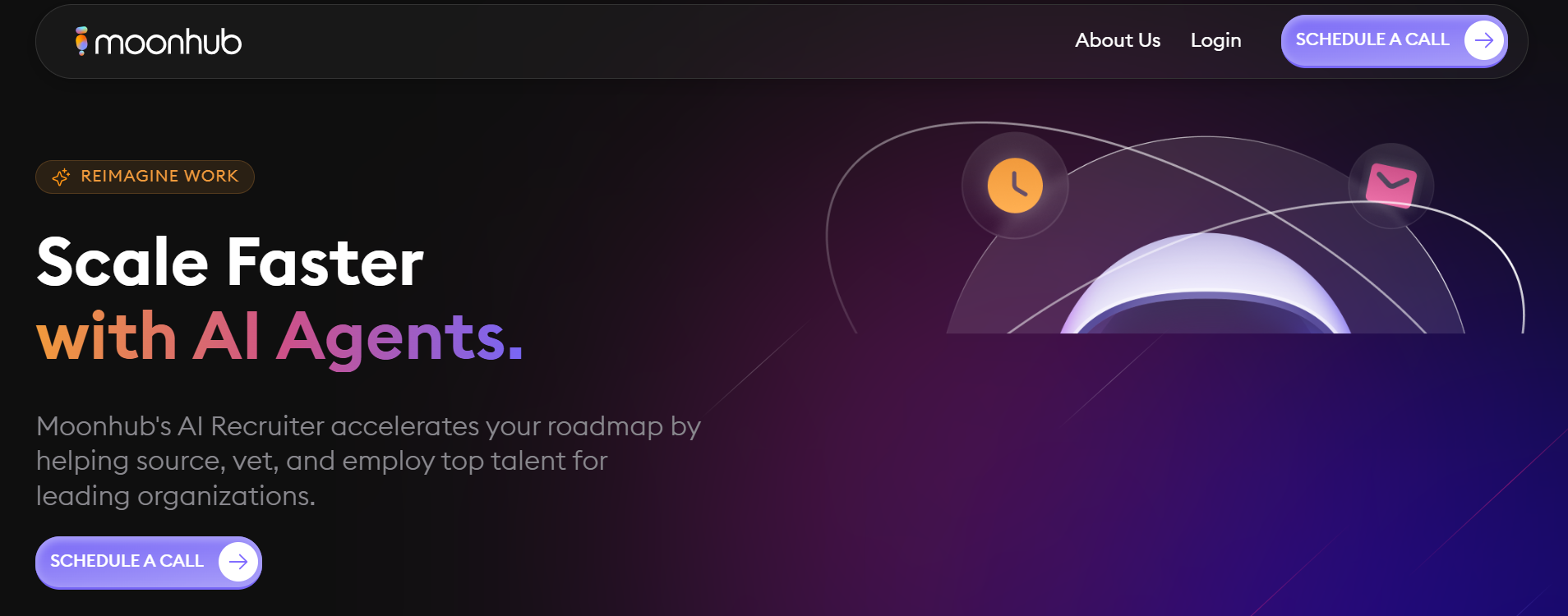



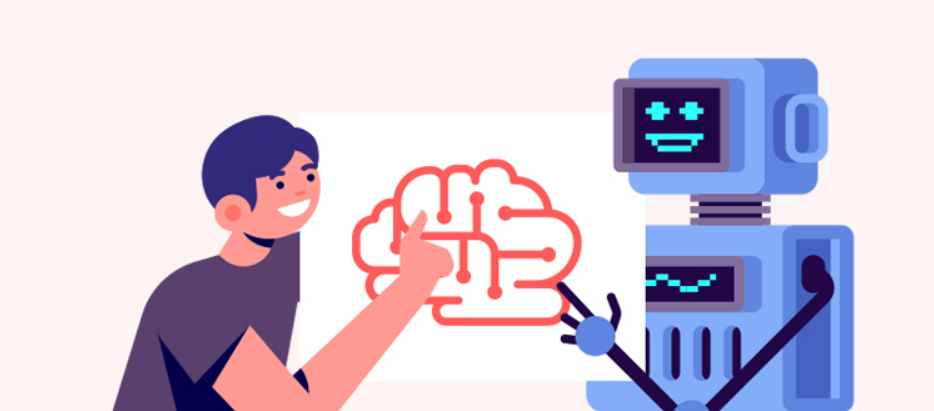
 扫一扫 加微信
hrtechchina
扫一扫 加微信
hrtechchina

